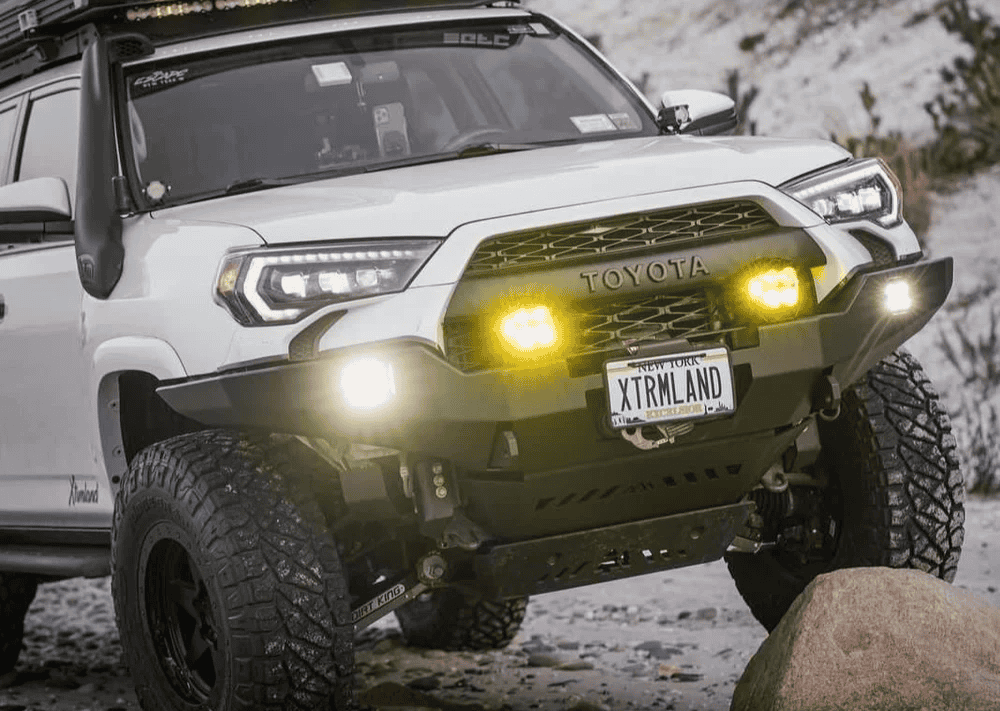Overland Vehicles

Gross Vehicle Mass is the maximum allowable weight of a vehicle when loaded with fuel, passengers, gear, and accessories. It sits alongside axle ratings and tire load capacity, and it dictates how much you can carry without overstressing the chassis or braking system. In many countries, GVM is a legal value tied to the registration and insurance of the vehicle. Exceeding it can reduce stability, lengthen stopping distances, and increase component wear. For overland trucks, where bumpers, racks, tents, water, tools, and spares add up quickly, understanding GVM is the foundation of a safe build.
It helps to distinguish legal rating from capability. Components like springs, shocks, helper systems, and uprated brakes can improve control and durability under load. However, they do not automatically change the legal GVM unless the vehicle is certified under the rules where you register it. In the United States the similar term is GVWR. That number is set by the original manufacturer and typically cannot be raised without recertification by an approved entity. In other markets pre registration and post registration GVM programs may exist, each with defined tests and paperwork.
A good plan starts with a payload audit. List every item you intend to carry, from armor to cooking gear, then assign real weights. Do not guess. Visit a public scale with a full tank and your usual passengers. Gather three measurements if possible: total weight, front axle weight, and rear axle weight. These numbers reveal how accessories shift balance, which is as important as the total. Compare each value to your tire load index and axle ratings to find the true constraint.
GVM upgrades or component changes target the weakest link. Springs and shocks manage ride height and control, but they must work with bump stops, bushings, and sway control to keep geometry predictable. Tires must match or exceed the required load at your operating pressure. Braking needs attention when mass rises, since heat capacity and bias matter on long descents. Steering and alignment should be corrected after any height change to maintain tracking and electronic stability performance.
Calculate available payload by subtracting curb weight from the legal mass rating. Then subtract real world weights of passengers and full fluids to see true headroom. Corner weighing adds insight by showing left to right balance, which affects braking and grip on loose terrain. Reweigh after each major accessory addition. Night drives and wet roads expose weak setups, so aim for a conservative buffer rather than running right at the limit.
Select springs and dampers for your steady state load, not the empty state. Progressive rate solutions can help balance comfort when lightly loaded with control when full. Brake pad compound, rotor size, and cooling paths influence fade resistance. Tires should have a load index that exceeds per axle needs with a safety margin, and speed ratings matter for highway heating. Do not allow any single axle to exceed its rating even if the total mass is within the overall limit.
Legal status depends on your location. Some regions offer engineered GVM kits with documented tests and compliance plates. Others require second stage manufacturing to alter the original rating. Without formal certification, improved components can enhance safety but do not change the legal number on your registration. Keep records of weights, parts, and alignment data. Insurers often ask for proof after a claim, and complete documentation supports your case.
Changes in mass and ride height call for fresh habits. Re aim headlights, recalibrate driver assistance systems if required, and verify brake performance with controlled stops from various speeds. Inspect torque on suspension and steering hardware after the first few hundred miles. Monitor tire temperatures across the tread to confirm pressure is correct under your new load. On trails, adjust line choice to account for longer braking distances and extra inertia.
Periodic maintenance is non negotiable. Heavier rigs stress bushings, bearings, and joints. Grease, inspect, and replace wear parts proactively to prevent cascading failures far from help. Revisit the scale at least twice a year or after significant gear changes. A disciplined approach keeps the truck predictable when the terrain is not.
Looking for a partner that treats weight planning as seriously as cabin layout and power systems. Explore our overland rigs to see how we build for real travel, not just parking lot looks. If you want a tailored suspension, braking, and storage strategy that respects ratings and drives beautifully, our custom overland upfit process brings engineering rigor to every decision. New to our shop and want to understand our standards, start here: why choose OZK Customs.
If your truck is creeping toward its limits, do not wait for heat fade, cracked springs, or a scary stop to make the case. Bring us your use case, target routes, and real payload numbers, and we will map a clear path from weight audit to road test. Our team in Fayetteville, Arkansas builds long range rigs that steer straight, stop confidently, and stay within their legal envelope. Reach out and let us turn your plan into a capable machine that carries its weight with grace.
Ready to map your payload, select the right components, and keep your build legal and safe. Talk with OZK Customs in Fayetteville, Arkansas to plan weight targets, suspension, braking, and final validation before you add another pound. Tell us how you travel and we will engineer the path from idea to road ready.
ADDRESS:
6159 E Huntsville Rd, Fayetteville, AR 72701
PHONE:
(479) 326-9200
EMAIL:
info@ozkvans.com